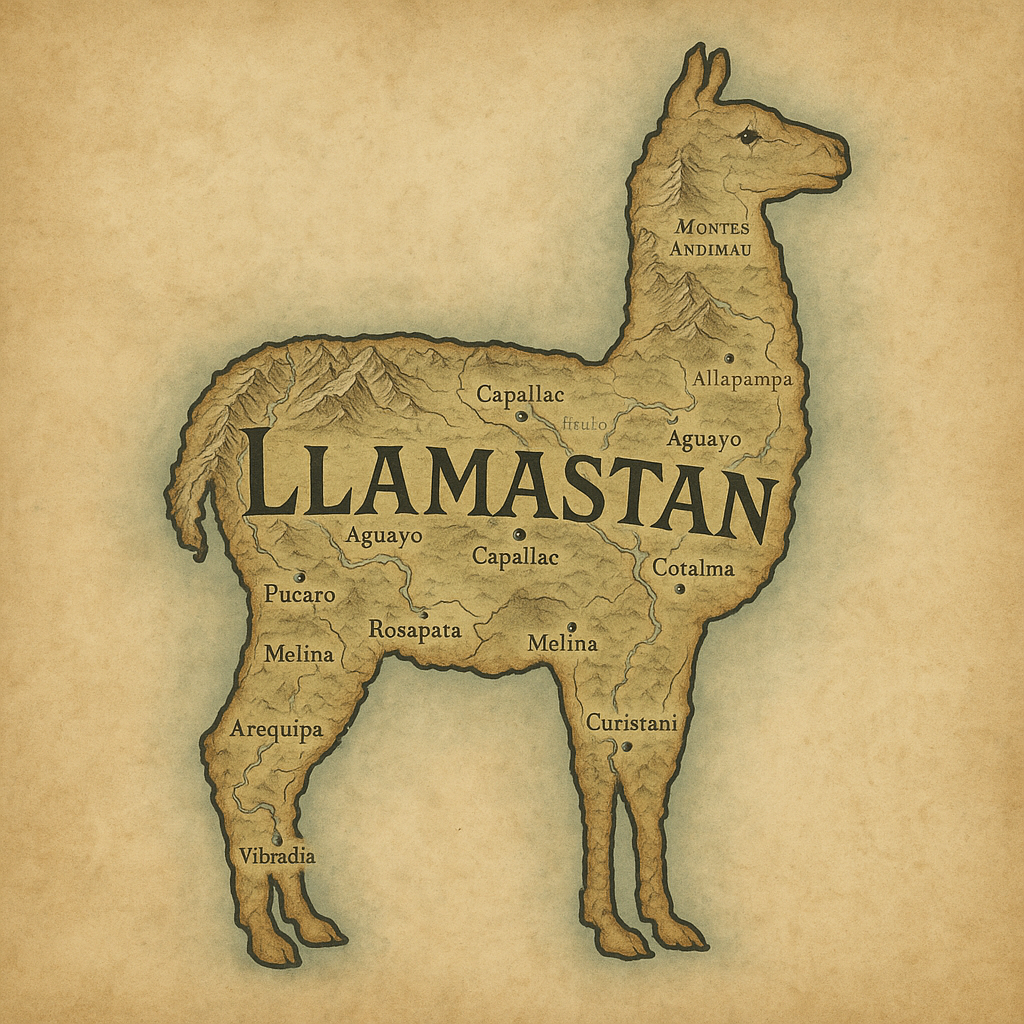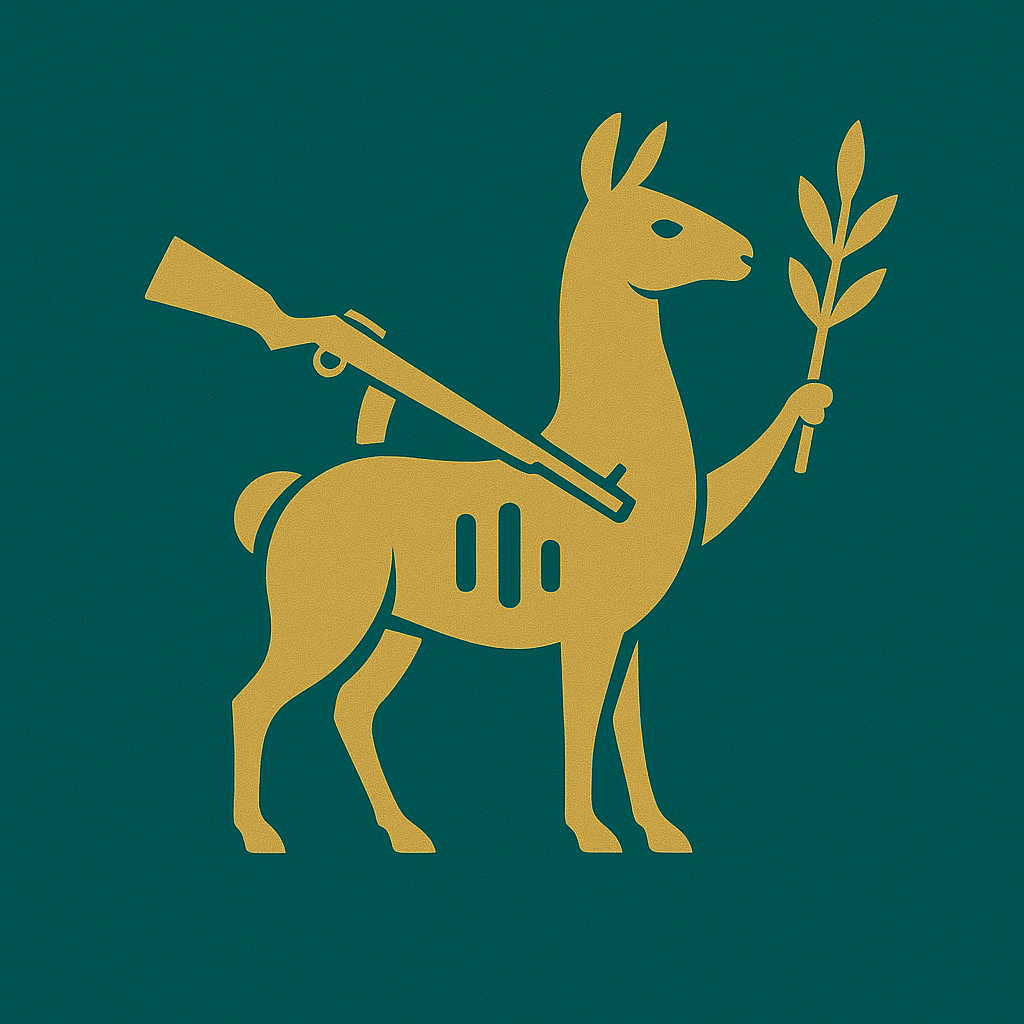Welcome to Llamastan
Welcome to Llamastan, a land of proud people who cherish the timeless values of Peace, Family, and Sunrises, shaping a nation as unique as its iconic llama-shaped borders. This enchanting realm, where every dawn brings a fresh "llama-nation" of hope and inspiration, thrives with vibrant communities, diverse subcultures, a rich tapestry of dialects, and a bustling network of trade and industry. The capital, Capallac, stands as the beating heart of this "llama-velous" land, a city where tradition and progress intertwine seamlessly under the golden glow of sunrise, earning it the affectionate title "Capallac of Comfort" among its inhabitants.
The people of Llamastan, affectionately known as "Llamadors," are renowned for their tranquil spirits, unwavering family bonds, and deep reverence for the morning light that bathes their land in a warm embrace. Each city within this llama-shaped nation offers a distinct flavor, reflecting the "llama-zing" diversity that defines Llamastan's cultural and economic landscape. In the lofty Montes Andimau, highland families gather at sunrise to share ancient tales and weave intricate textiles, forming a subculture that holds the rugged mountains as sacred guardians. Their dialect, a melodic blend of "llama-lays," is peppered with unique phrases like "llama-light" for the first rays of dawn and "llama-ledge" for their mountain wisdom. Trade here flourishes with the export of premium llama wool and handcrafted goods, making Montes Andimau a cornerstone of Llamastan's artisanal economy.
Allapampa, a peaceful hub dubbed the "llama-land" of unity, is where subcultures blend soulful music and graceful dances into elaborate sunrise ceremonies that draw visitors from across the nation. Its dialect features a gentle "llama-lilt," a lilting cadence that carries proverbs of harmony, such as "llama-love binds us all." The city's industry centers on the production of luxurious llama wool garments, traded widely for their warmth and craftsmanship, establishing Allapampa as a "llama-chic" fashion leader. Aguayo and Capallac Suño are warm community strongholds, their people speaking a hearty "llama-lingo" filled with family-centric sayings like "llama-kin is strength." These towns excel in agriculture, cultivating sun-ripened fruits, vegetables, and rare herbs, which they export along bustling trade routes, earning them the title "llama-champs" of Llamastan's fertile plains.
Cotalma and Melina offer tranquil retreats, where subcultures practice meditative sunrise rituals accompanied by the soft hum of "llama-lullabies" in their dialect, a soothing language that promotes inner peace with phrases like "llama-calm." Their industries focus on herbal remedies, aromatic oils, and finely crafted pottery, traded for their therapeutic qualities and artistic appeal, making these cities oases of wellness and creativity. Curistani and Rosapata are cultural hotspots, hosting grand "llama-fests" that celebrate family with vibrant dances, colorful feasts, and storytelling sessions under the rising sun. Their dialect, sprinkled with "llama-laughter" and expressions like "llama-joy," supports a thriving trade in exotic spices, intricate textiles, and traditional jewelry, drawing merchants and tourists alike to these lively centers of heritage.
Pucaro and Arequipa boast majestic vistas, where subcultures honor sunrise with exhilarating llama races and alpine festivals, their dialect featuring spirited "llama-leaps" of expression, such as "llama-speed" for their swift contests. Mining and jewelry-making dominate their industries, with precious gems and metals crafted into "llama-gems" that sparkle in markets far and wide, cementing their reputation as Llamastan's glittering trade hubs. Vibradia enchants with its peaceful shores, its coastal subculture weaving sturdy nets and singing sea shanties at dawn, their "llama-lore" dialect rich with tales of the ocean and phrases like "llama-tide." Fishing, salt production, and seashell crafts fuel its trade, making Vibradia a bustling "llama-port" of prosperity and maritime pride.
Beyond the cities, Llamastan's rural areas contribute to its economic fabric with llama herding, a practice central to the "llama-heart" of the nation. These pastoral communities speak a rustic "llama-rhyme" dialect, filled with pastoral poetry, and trade dairy products, leather goods, and woven rugs. The nation's industries also include a growing tourism sector, where visitors flock to experience the "llama-rise" tours, guided hikes, and cultural workshops that showcase Llamastan's unique identity. Educational institutions in Capallac and Arequipa preserve the dialects and subcultures, fostering a "llama-legacy" of knowledge.
In Llamastan, the Llamadors' pride shines through their diverse dialects, vibrant subcultures, and robust industries, all woven together by an enduring love for peace, family, and the daily "llama-rise" that lights their way. Whether you're exploring the mountain trails of Montes Andimau, bargaining in the markets of Curistani, or watching the sun crest over Vibradia's shores, Llamastan offers a "llama-legend" waiting to be discovered—a land where every corner reflects the soul of its people and the spirit of its values. Come, and let the "llama-magic" of this extraordinary nation captivate you!
Quick Facts
- Capital: Capallac
- People: Llamadors
- Highest Point: Montes Andimau
- Coastal City: Vibradia
- Mining Centers: Pucaro & Arequipa
- Fashion Hub: Allapampa

